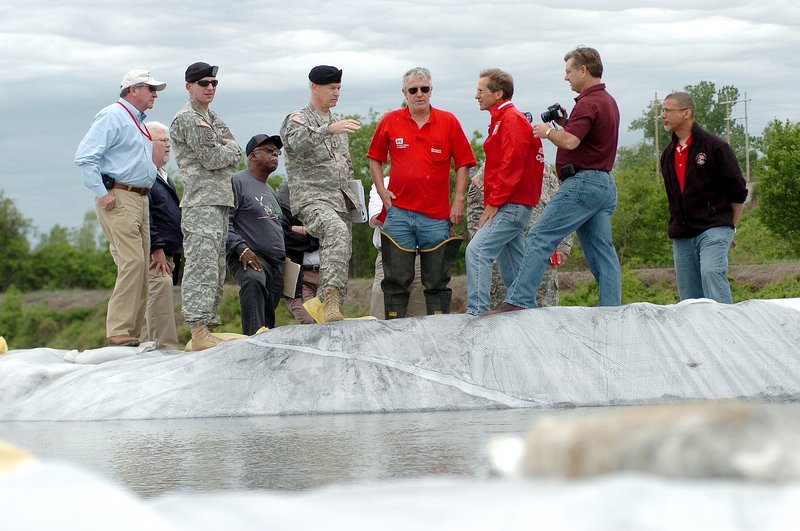CAIRO, Ill. – A legal fight over whether the Army Corps of Engineers should blast open a levee to relieve the rain-swollen Mississippi River went to the nation’s highest court Sunday as the Illinois town the breach is meant to help during record flooding was cleared out.
As Missouri asked the U.S. Supreme Court to block the corps’ plan, struggling Cairo near the confluence of the Ohio and Mississippi rivers resembled a ghost town as Illinois National Guard troops went door to door with law enforcers to enforce the mayor’s “mandatory” evacuation order the previous night.
About 20 to 30 families were allowed to stay in the 2,800-resident town — a courtesy extended only to adults — after signing waivers acknowledging that they understood the potential peril, National Guard Sgt. 1st Class Heath Clark said.
“If you’re (possibly) losing everything and don’t know where to go, you wouldn’t want to leave, either,” he said during a staging area in the Cairo High School cafeteria.
The corps is considering blowing a two-mile hole into the Birds Point levee in southeast Missouri just downriver from Cairo as a relief valve meant to ease the menacing rivers and ultimately lower them, taking pressure off Cairo’s floodwall and other levees farther south along the Mississippi.
But the plan possibly would inundate 130,000 acres of now-evacuated farmland in Missouri’s agriculture-reliant Mississippi County, Missouri argues, which would crush that region’s economy and environment by rendering that cropland useless under potentially feet of sand and silt.
Missouri Attorney General Chris Koster, whose bid to derail the corps’ plan in recent days included failed requests to a federal district judge and an appellate court, took the case to the U.S. Supreme Court, noting “it is the responsibility of this office to pursue every possible avenue of legal review.”
Corps officials are monitoring water levels and haven’t decided whether to go through with the blast to blunt the rise of the Ohio, which Sunday afternoon had risen to 59.93 feet at Cairo — eclipsing the 1937 record there of 59.5 feet. The river was expected to crest Tuesday at 61.5 feet and stay there for days, raising the corps’ concerns about the lingering strain water that high could put on levees. Cairo’s floodwall can handle 64 feet.
Sunday’s house-to-house canvass came as more thunderstorms passed through the already rain-pummeled region — and as emergency-management officials in Cairo focused warily on a “sand boil” — an area of river seepage that’s a potential sign of trouble — pooled to 40 feet wide and 12 feet deep about 100 yards from the floodwall.
Marty Nicholson, Alexander County’s emergency management coordinator, said the boil was in check, resembling a doughnut surrounded by a mound of plastic-covered rock and sandbags.
“We’ve had sand boils before, but never this big,” Nicholson said, noting that some 70 percent of the 9,600-resident county was flooded.
Copy the Story Link
Send questions/comments to the editors.



Success. Please wait for the page to reload. If the page does not reload within 5 seconds, please refresh the page.
Enter your email and password to access comments.
Hi, to comment on stories you must . This profile is in addition to your subscription and website login.
Already have a commenting profile? .
Invalid username/password.
Please check your email to confirm and complete your registration.
Only subscribers are eligible to post comments. Please subscribe or login first for digital access. Here’s why.
Use the form below to reset your password. When you've submitted your account email, we will send an email with a reset code.